Blog Article
What is a Changelog?

Jens Schumacher
May 18, 2023
•
5
minutes read
Best practice
A changelog is a useful document that provides a clear and concise overview of the alterations, fixes, and enhancements made to a project over time.
By listing these modifications in a well-organized, chronological order, the changelog helps developers and users to quickly identify the changes and improvements in each version of the software or project.
This document is often used as a reference point to understand what has been updated or fixed in a particular release and can also aid in troubleshooting issues or bugs that may arise.
What makes a good Changelog?
To create useful changelogs, it's important to group similar changes together and ensure that every version of the project has an entry.
It's helpful if the versions and sections are linkable, and the most recent release should appear first.
Including the release date for each version is recommended to provide context and help users understand the project's development timeline.
If possible, follow Semantic Versioning in your project and release notes. Based on the version alone, readers will know what changes to expect.
Changelogs are designed for human readers, so it's important to make them easy to read and understand.
Avoiding Changelog Mistakes
Don't use commit log diffs. They contain noise such as merge commits, obscure titles, and documentation changes. The purpose of a changelog entry is to document noteworthy differences across multiple commits and communicate them clearly to end-users.
Don't forget to clearly mark deprecations. It's essential to list deprecations, removals, and breaking changes in the changelog to make it clear when something will break during an upgrade.
Don't forget to call out security issues. Any security related changes should be more than a line-item in the bug-fix section. Clearly mark and draw attention to them.
Where Should you publish your changelog?
To ensure that stakeholders can easily access and review the changelog, it should be published in a clearly defined location. For developers and other technical audiences, including the changelog as a CHANGELOG.md file in the source repository is a popular option. This allows the audience to access the changelog directly from the repository, which is often where they spend most of their time.
Including a changelog section in the software or website can provide users with a convenient location to access the changelog.
Alternatively, placing the changelog in a dedicated section of the project's documentation can provide a centralized location for all project-related information.
For mobile applications or other platform-based software, publishing the changelog in the app store can be an effective way to keep users informed about changes and new features.
Ultimately, the location where the changelog is published will depend on the project's needs and the preferences of its stakeholders.
How is a Changelog Different From Release Notes?
Changelogs are succinct and direct. They have more significance for the software development team than for the users. Sometimes, they will also include technical information on bug fixes or other things that are not important to end users.
Release Notes on the other hand are more commonly used for marketing purposes. They are more verbose and contain more detail about customer benefits and use-cases. For a more detailed comparison, check out our article on the topic.
5 Great Changelog Examples
React
React updates represent a very technical form of a changelog. React is a well-known programming library and developers are the intended audience.
Individual changes are limited to a single sentence, keeping the update succinct. Every change has a link to the actual code change as well, making it easy for developers do dive into more detail if they want to.
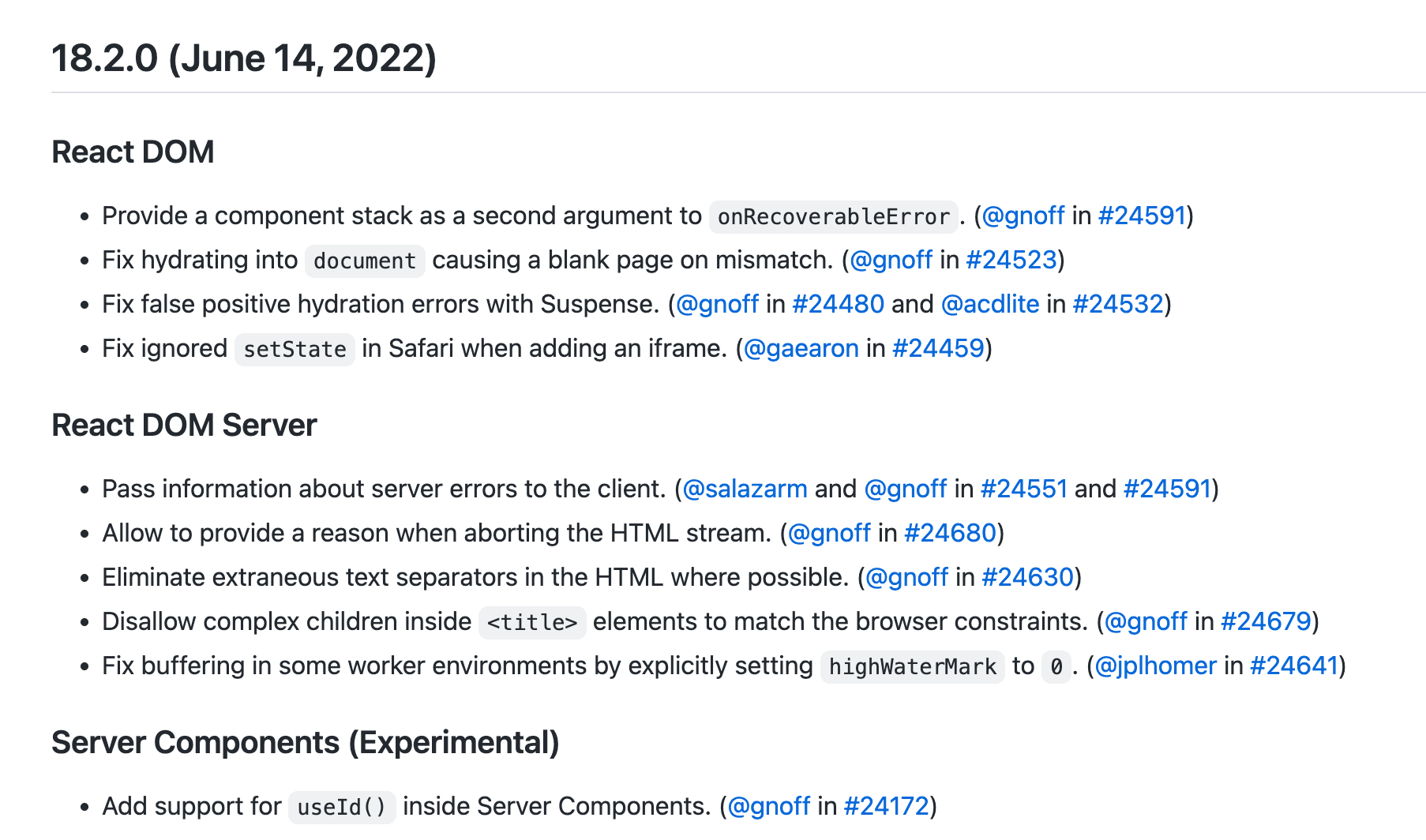
Sketch
Let's take a look at how Sketch informs users of new features with each update. We love the design and typography. The prominent versions and download link are also a nice touch.
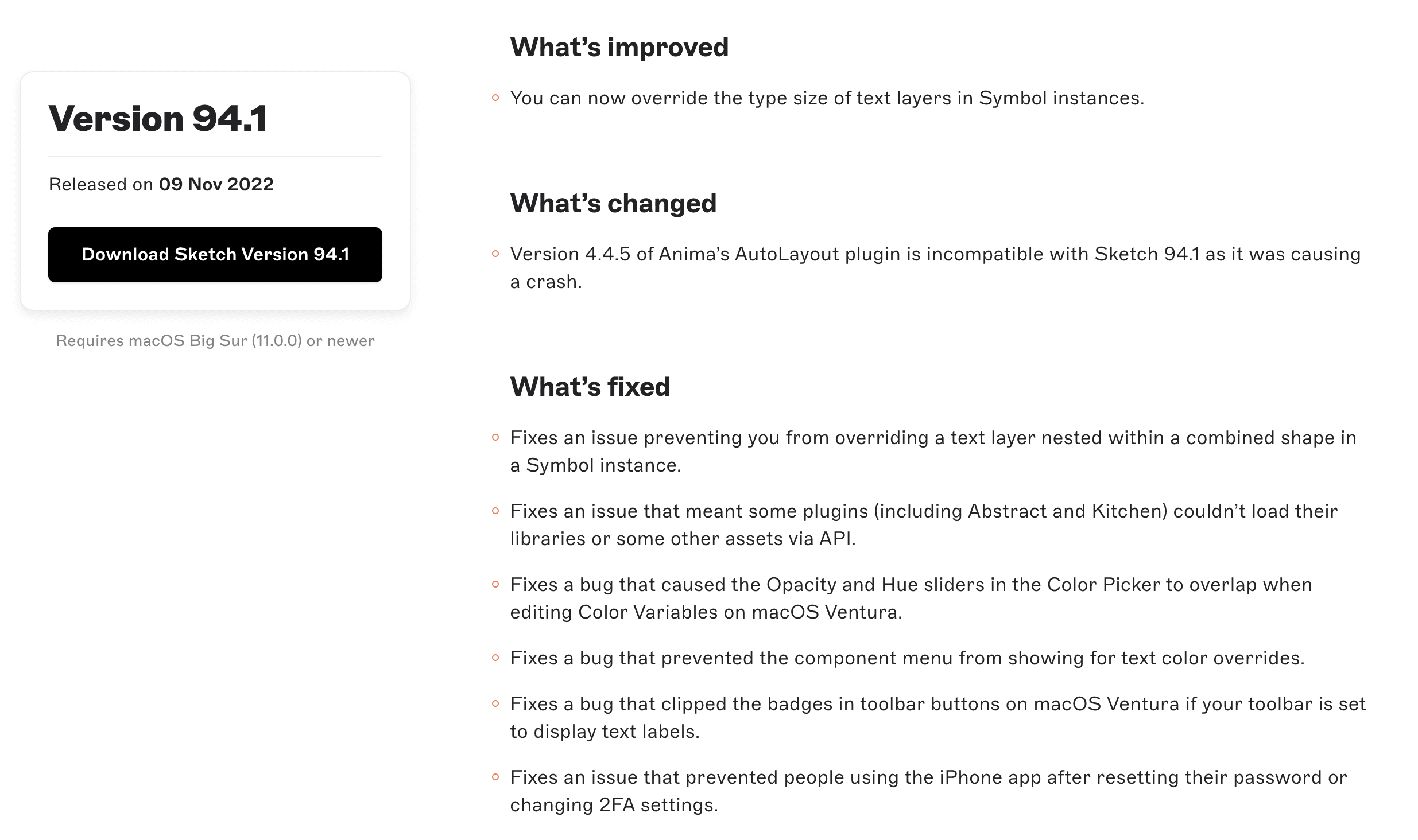
Jira Cloud Platform
Unlike the Jira Product Release Notes, the Cloud Platform Changelog is aimed at developers. The changelog focuses on highlighting newly available features and APIs, deprecated functionality and announcements relevant to the developer community. They differ from the previous examples in that each announcement is a short summary of changes rather than a list of items. But they are still fast to read and relevant links to more detailed documentation are clearly highlighted.
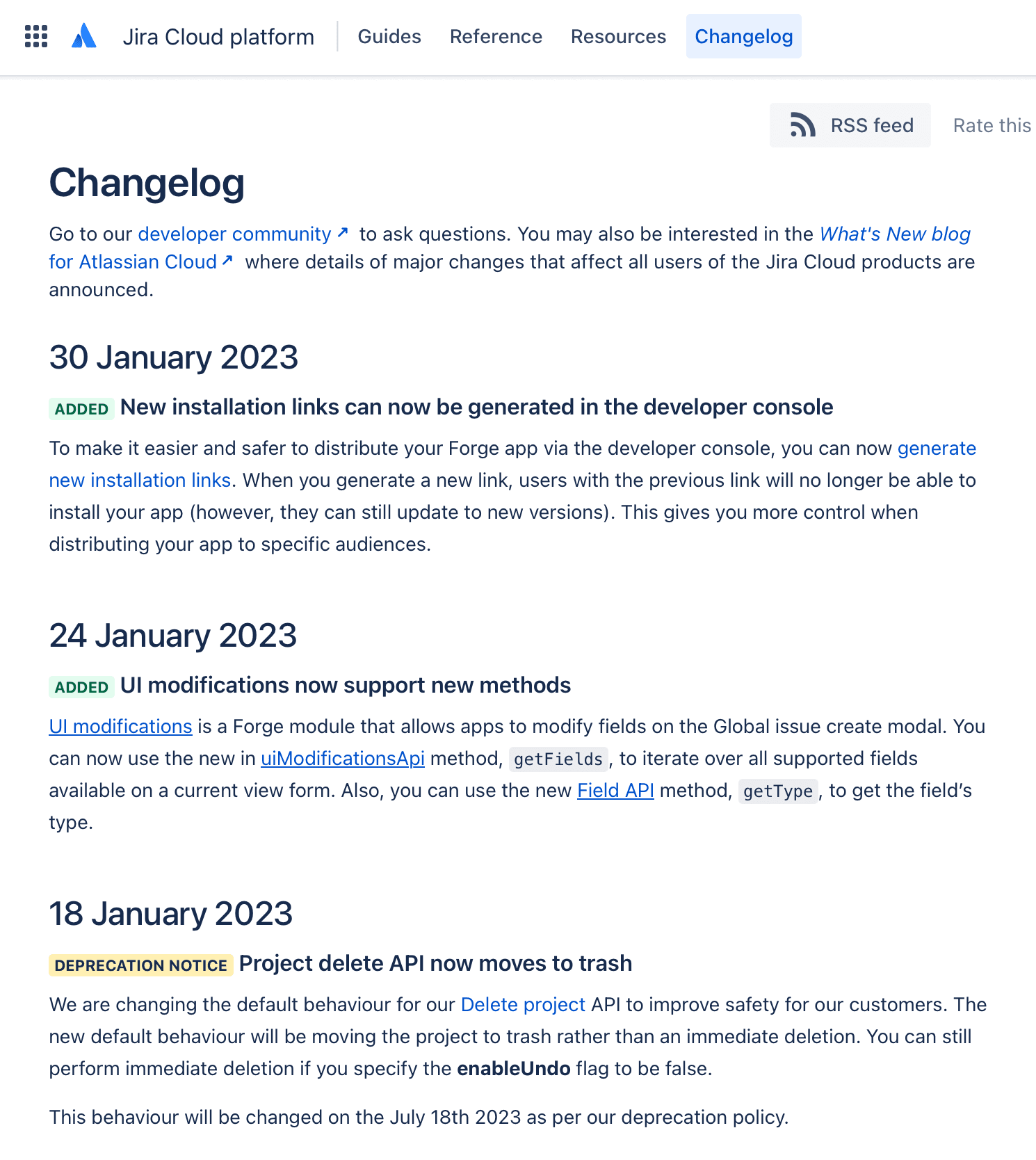
Slack
Slack's changelog is slightly more verbose, but it's worth it! The content team that maintains the changelog deserves kudos for their creativity. They turn, what often are dry updates, into an entertaining read.
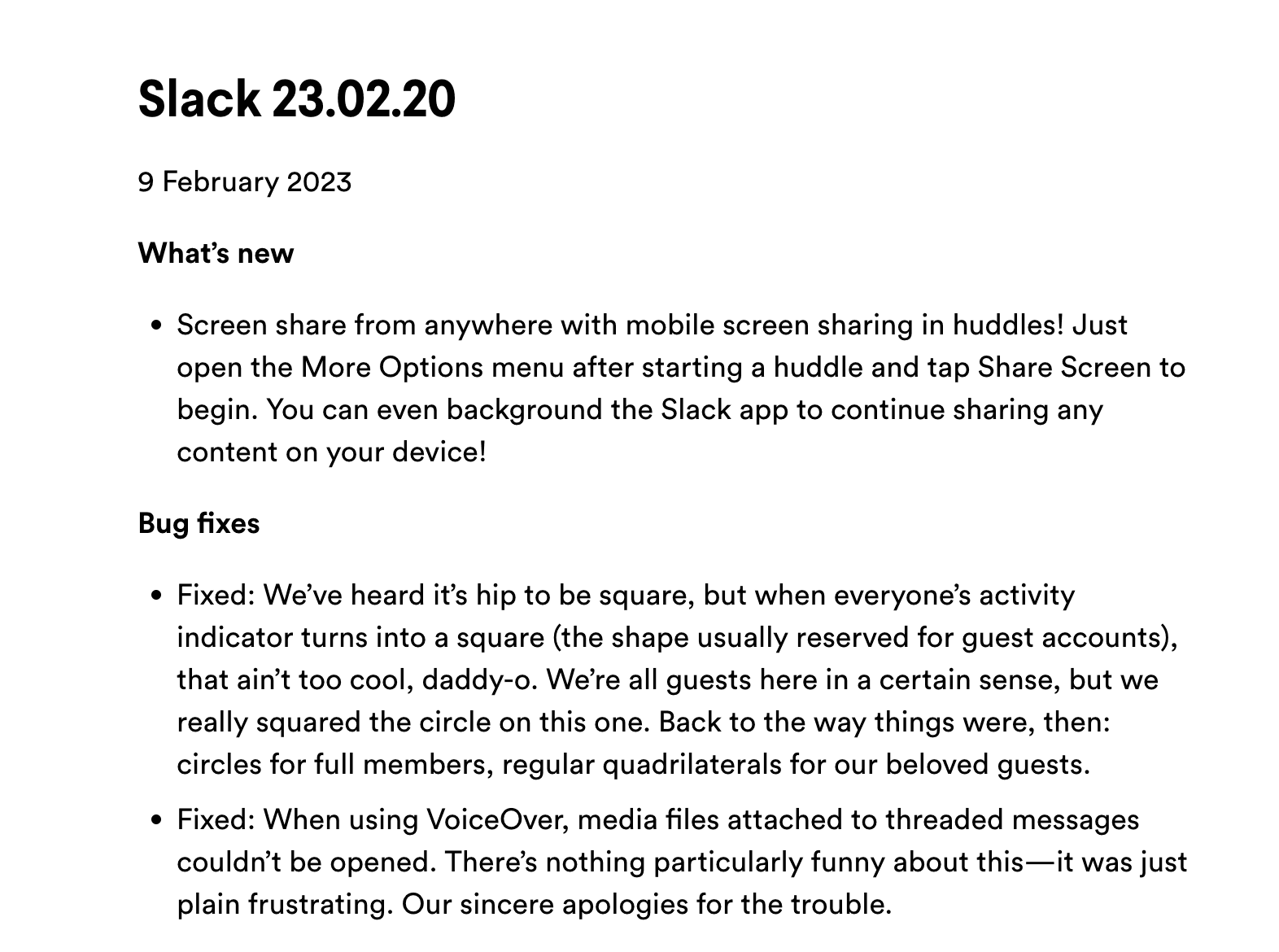
Algolia Docs
Who says that a changelog is only useful for code or apps. The Algolia content team maintains a changelog for their documentation. Each announcement is a short summary of newly available content with a link to the full documentation.
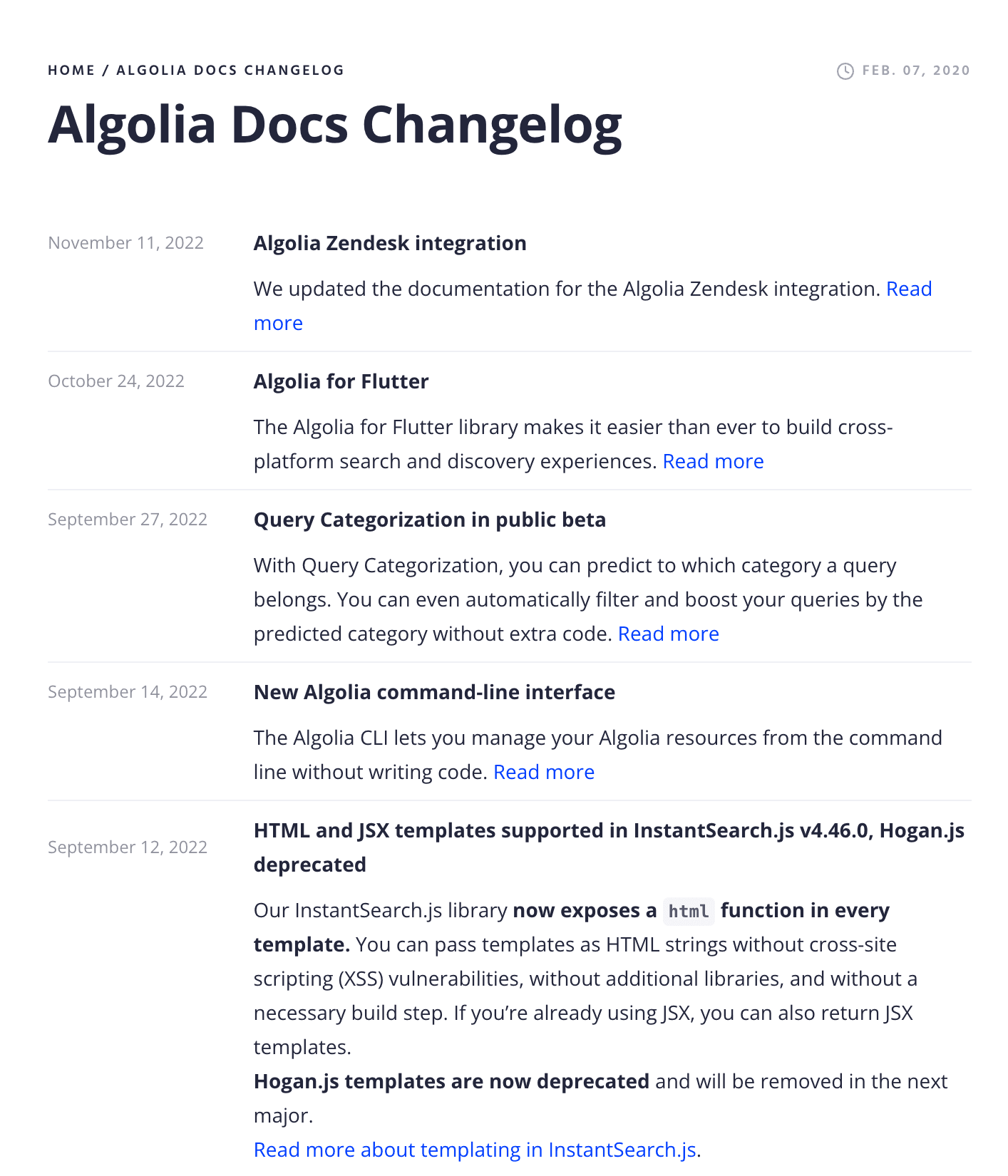
Time to Up-Level Your Customer Communication
Improving your customer communication and engagement not only leads to happier customers, but also to better retention.
Our mission is to help teams up-level their customer communication. From planning and writing to publishing your announcements. Released takes the hassle out of product announcements.
Subscribe to our newsletter
Get the top articles of the month, delivered to your inbox.





